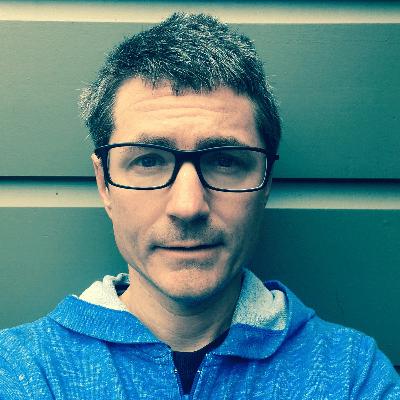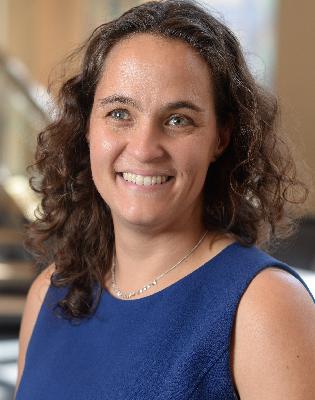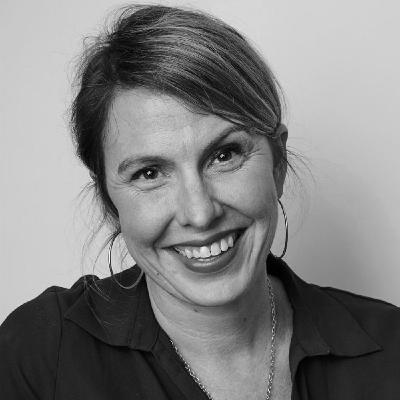49: Unraveling Complexity in Product Development (ft. John Cutler)
Description
Transcript
This transcript is auto-generated and lightly edited. Apologies for any mistakes.
Jesse: I’m Jesse James Garrett,
Peter: and I’m Peter Merholz.
Jesse: And we’re finding our way,
Peter: Navigating the opportunities
Jesse: and challenges
Peter: of design and design leadership,
Jesse: Welcome to the next phase.
Joining us to talk about what’s next for digital product design is John Cutler, veteran product manager and product management consultant. Along the way, we’ll discuss what product leaders know that design leaders don’t, facing ambiguity and uncertainty from executives, and how design leaders can more effectively advocate for the true value of their team’s work.
Peter: John, thank you for joining us.
We usually start by having our guests explain a little bit about what they do. And, in particular, in your case, I think that’s important because Jesse and I were saying right before you got on, like, we’re trying to track the narrative of your career arc but maybe you could just walk us through what you’re about, where you’ve been, and where you are now, or what you’re doing now.
John: Sure. Yeah, I’ll give the quick story. Dropped out of college, had a video game company. I made a bartending CD-ROM game called Last Call. It’s like when you shipped games on a CD-ROM..
Jesse: Yay, physical media.
John: And then I slipped into playing music. And touring with different bands, which is a lot of fun, and then sort of picked up more and more tech type jobs over the years you know, like adtech.
And I worked at a company that literally took PDF catalogs and made them into flipping page catalogs. That was a thing at the time that was, yeah, there’s probably a lot of good UX lessons in that. And then I got involved in B2B SaaS company. So software as a service companies and a range of companies from Zendesk and Appfolio and a company called Amplitude, where I actually was a product evangelist, where it was, I mean, I basically lucked into this crazy role at a company that fit my personality, where I like thinking about this stuff and I’m curious and I like teaching and I like packaging the things I’m doing as a product.
And I was this product evangelist at Amplitude. And that put me in touch with teams really from around the world, you know, hundreds of teams, I forget the number, but we maybe did, you know, a thousand one-on-ones with product leaders and met with hundreds of teams along the way.
So at, by that point, I had done some product management, UX research, then I was this product evangelist role. Then I did this product enablement role at a company called Toast. And here I am today. And that’s it, you know, UX research, product management, working in New York City and doing tech with that before it was called product management and just doing stuff and music.
And so yeah, pretty across the board, but there are some through lines. But that’s generally where I’m coming from.
John’s distinct drive
Peter: As you were sharing, I was thinking about how I have gotten to know you, which is primarily through your voluminous engagement on LinkedIn. And you are always someone, kind of, processing conversations that you’re having with folks, things that you’re seeing, you’ve got your newsletter, you’re often posting and we’ll get to the content of that in a moment.
But before then, I’m wondering, what is your drive? Like what, if you had like a personal mission or a purpose statement or something that’s kind of underlying all of this, that’s driving this questing kind of behavior, that at least, as I witness it.
John: We could probably go way back to childhood for that one. I mean, it is sort of funny. There was a school play, I think it was second grade, and the teacher, it was called Vernacular Island. She wrote the play called Vernacular Island, and I was the question mark.
Jesse: Wow. You were branded early.
John: I was branded very, very early. It’s like they got through all the letters with Cutler. Cutler, the question mark, you know. It’s funny because I always want to go back and find who the exclamation mark was. It’s probably the CEO of a company or something.
Jesse: Wow.
John: You know, so this goes back a long way. I think it’s a combination of being curious, working things through in writing, seeking to understand, and seeking some level of coherence from what I’m seeing.
Yeah, a lot of it is actually thinking through writing. I mean, if I had done it all over again, I would have taken more careful notes on what I was seeing and probably written less. I didn’t need to think in public as much as I’ve been doing probably over these years and putting it out there. It’s been pretty time consuming to be honest.
But that’s generally what’s driven me. You know, I get, I get these… I’m curious about something. I have these open questions that I’m trying to think through either in my personal life or my personal professional life, or more broadly, the sort of zeitgeist of things.
I mean, working at Amplitude, one day would be Amazon and Intercom and then some bank and then some plumbing supply company. And then some company that was going to do massive layoffs, another company hiring 10,000 people. And that just leaves you with tons of questions.
I mean, just one day like that will leave you scratching your head for months, right? And that’s generally what you’re seeing as I work through this stuff.
The variability of product management
Jesse: That’s interesting because I think that for a lot of the design leaders who listen to this podcast, the vantage point that they have is so narrow because they are operating within their role, within their vertical, within their market context. Peter and I were actually just talking about this the other day, the way that our experience as consultants required us, I think, to do a different level of sort of pattern-matching.
My sense is that although you do have a design background, you’ve been really focused on the product management side of the fence and the problems that exist in that space. And there are a lot of problems that exist in that space that are just simply unfamiliar to the design folks in our audience, despite the fact that they are engaging every day with the people who are directly trying to solve these problems. And so I guess that’s the first thing that I wonder about is, What are you noticing broadly these days about what’s going on with product management that might be really hard for design leaders to actually have a view into? I know that’s a really big question. Mm
John: Yeah, I, yeah. Let’s, let’s first acknowledge the diversity of contexts out there. I think that’s really important. So even when we believe we have deep or broad context, it’s usually not nearly as deep as one other person or as broad as the next person. You know, a lot of people in Silicon Valley are like, “I worked at 15 companies in the Valley.”
And you’re like, “Yes, you’ve worked at 15 companies in the Valley.” It’s actually still pretty narrow or, you know, I’ve definitely observed that product management is both decades old and years old in some ways. So one thing when you’re observing product management, I was speaking with a design leader recently and they just couldn’t make sense of it.
They said, you know, I don’t get this. I mean, we’re… design community, we figured these things out for a long time now and I don’t get product. They seem so wishy-washy at the moment. I mean, they seem like the weak link at the moment.
And I think what’s kind of funny is, that people, if you go to a consumer goods company, for example, they have product managers, the product manager owns a clothing line or a shoe line. I have a friend who works at Deckers here in Santa Barbara, Hoka, their shoes. There’s a PM for that. Pretty defined areas of responsibility for them to do that. They own the P and L for that particular product. They have partners in engineering, the people who make the shoes. They have people in design, the people who design the shoes, right? There’s an understanding of how that thing works.
And I was chatting with them about the problems in the product space. And they’re like, this makes no sense to me. Like, we figured this out. I don’t understand why things are so wishy-washy in software at the moment. So what we were reflecting on when I was talking to this design leader is that certainly some things that we’re doing now, some companies were doing 20 years ago, but there’ve been massive changes at the same time in ways of working.
I mean, I was speaking to someone the other day and I said, “Have you ever worked at a company where you could deliver something in days or hours?” He’s like, “Days or hours? No. I mean, it takes months to get anything done, right.” I said, “Oh, now take your skills and mash that against doing things in days and hours.”
“Oh, wow. Okay. That’s different.”
Or another example during, you know, the, this zero interest rates thing. Imagine being at a company























